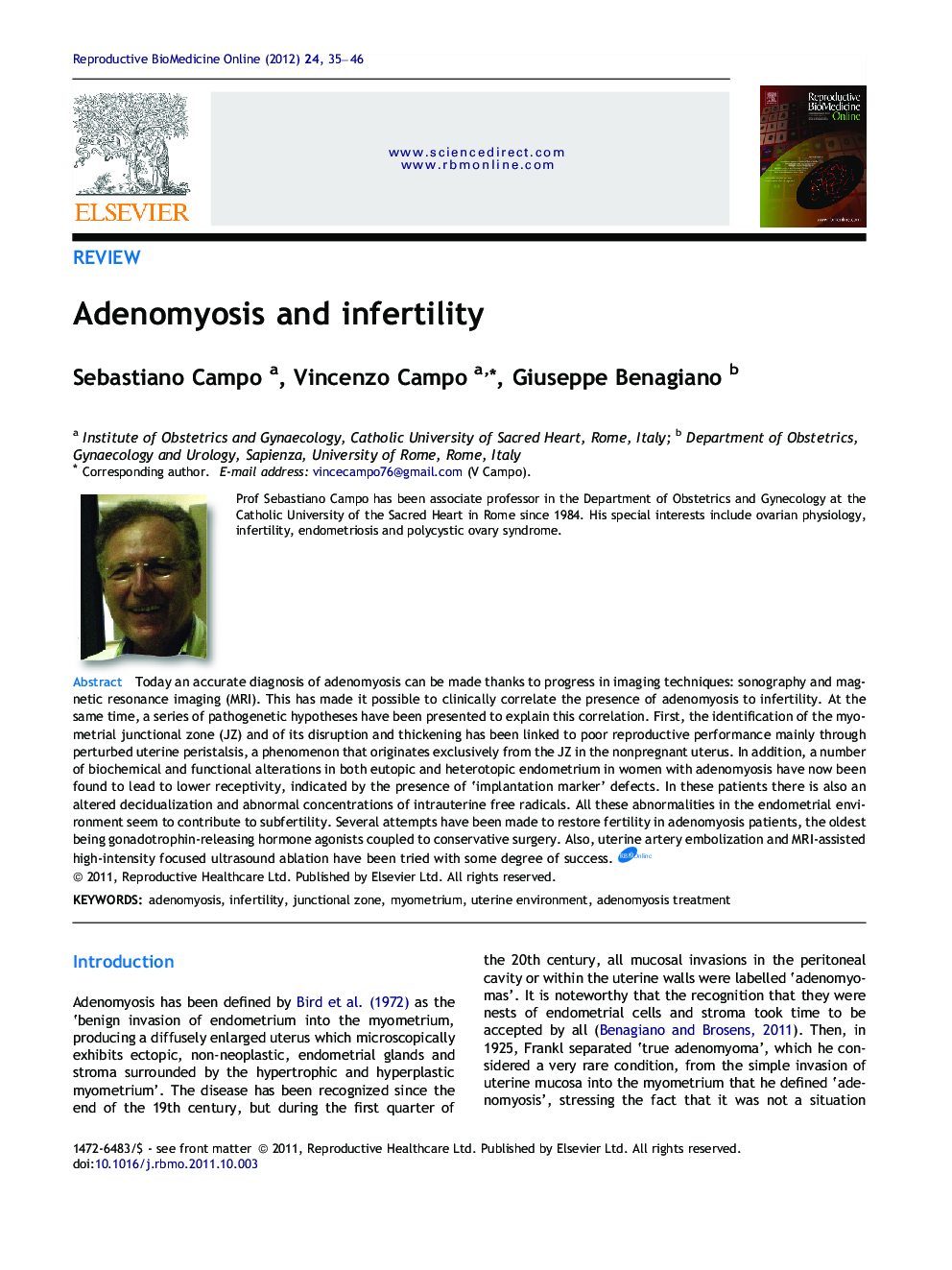| Article ID | Journal | Published Year | Pages | File Type |
|---|---|---|---|---|
| 3970620 | Reproductive BioMedicine Online | 2012 | 12 Pages |
Today an accurate diagnosis of adenomyosis can be made thanks to progress in imaging techniques: sonography and magnetic resonance imaging (MRI). This has made it possible to clinically correlate the presence of adenomyosis to infertility. At the same time, a series of pathogenetic hypotheses have been presented to explain this correlation. First, the identification of the myometrial junctional zone (JZ) and of its disruption and thickening has been linked to poor reproductive performance mainly through perturbed uterine peristalsis, a phenomenon that originates exclusively from the JZ in the nonpregnant uterus. In addition, a number of biochemical and functional alterations in both eutopic and heterotopic endometrium in women with adenomyosis have now been found to lead to lower receptivity, indicated by the presence of ‘implantation marker’ defects. In these patients there is also an altered decidualization and abnormal concentrations of intrauterine free radicals. All these abnormalities in the endometrial environment seem to contribute to subfertility. Several attempts have been made to restore fertility in adenomyosis patients, the oldest being gonadotrophin-releasing hormone agonists coupled to conservative surgery. Also, uterine artery embolization and MRI-assisted high-intensity focused ultrasound ablation have been tried with some degree of success.In the present study, the authors discuss about the possibility that adenomyosis may be associated with infertility and also provide a few clues as to which mechanisms may be involved. Today an accurate diagnosis of adenomyosis can be made thanks to progress in imaging techniques: sonography and magnetic resonance imaging (MRI). This has made it possible to clinically correlate the presence of adenomyosis to infertility. What seems clear is that structural and functional defects of the uterine junctional zone play an important role in conditions such as implantation failure or infertility and that adenomyosis is associated with a number of conditions that are believed to impair embryo implantation: altered uterine peristaltic activity, abnormal endometrial growth, implantation marker defects, altered decidualization and presence of abnormal levels of intrauterine free radicals. Several attempts have been made to restore fertility in adenomyosis patients, the oldest being gonadotrophin-releasing hormone agonists coupled to conservative surgery. Also, uterine artery embolization and MRI-assisted high-intensity focused ultrasound ablation have been tried with some degree of success.
